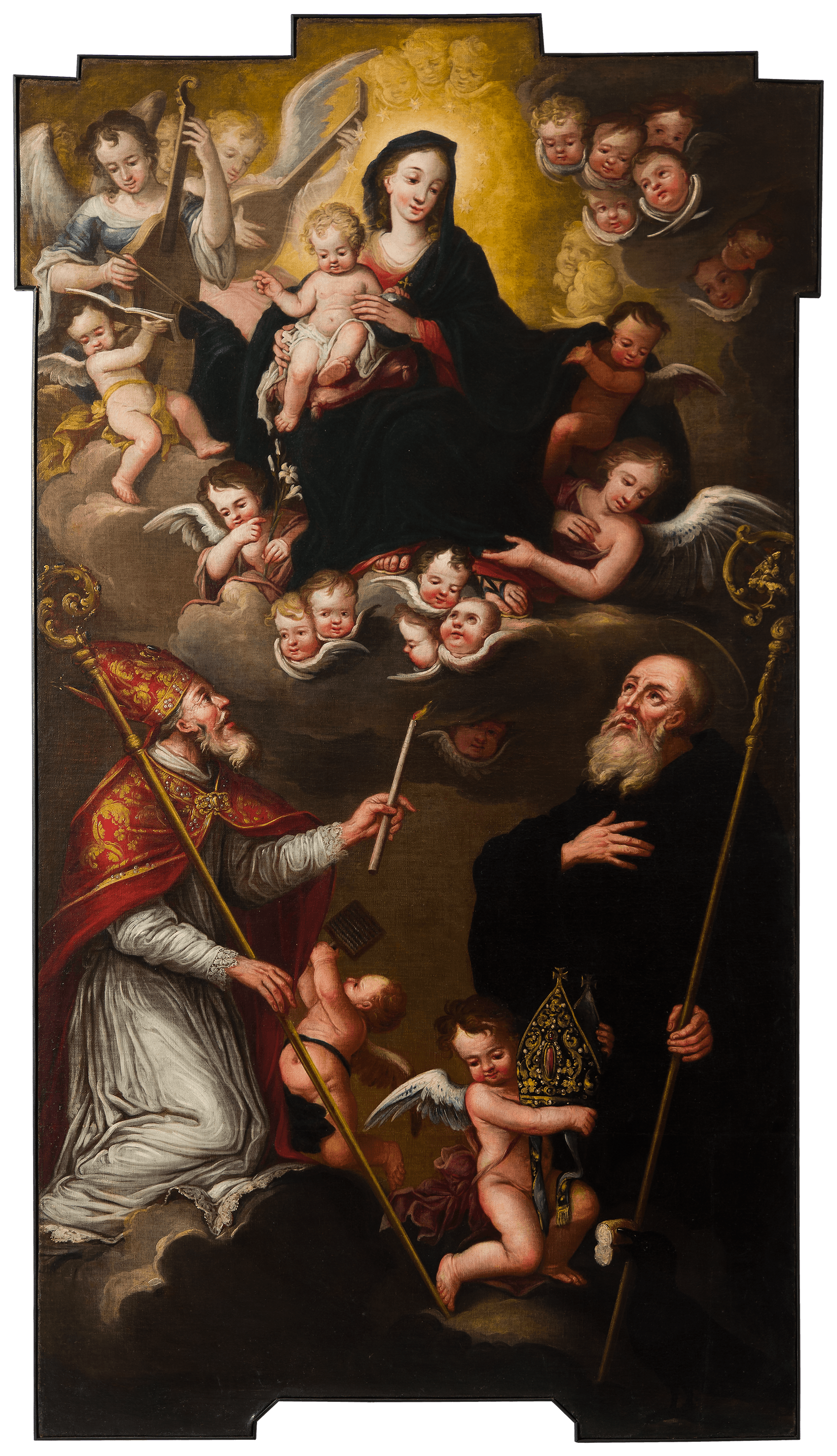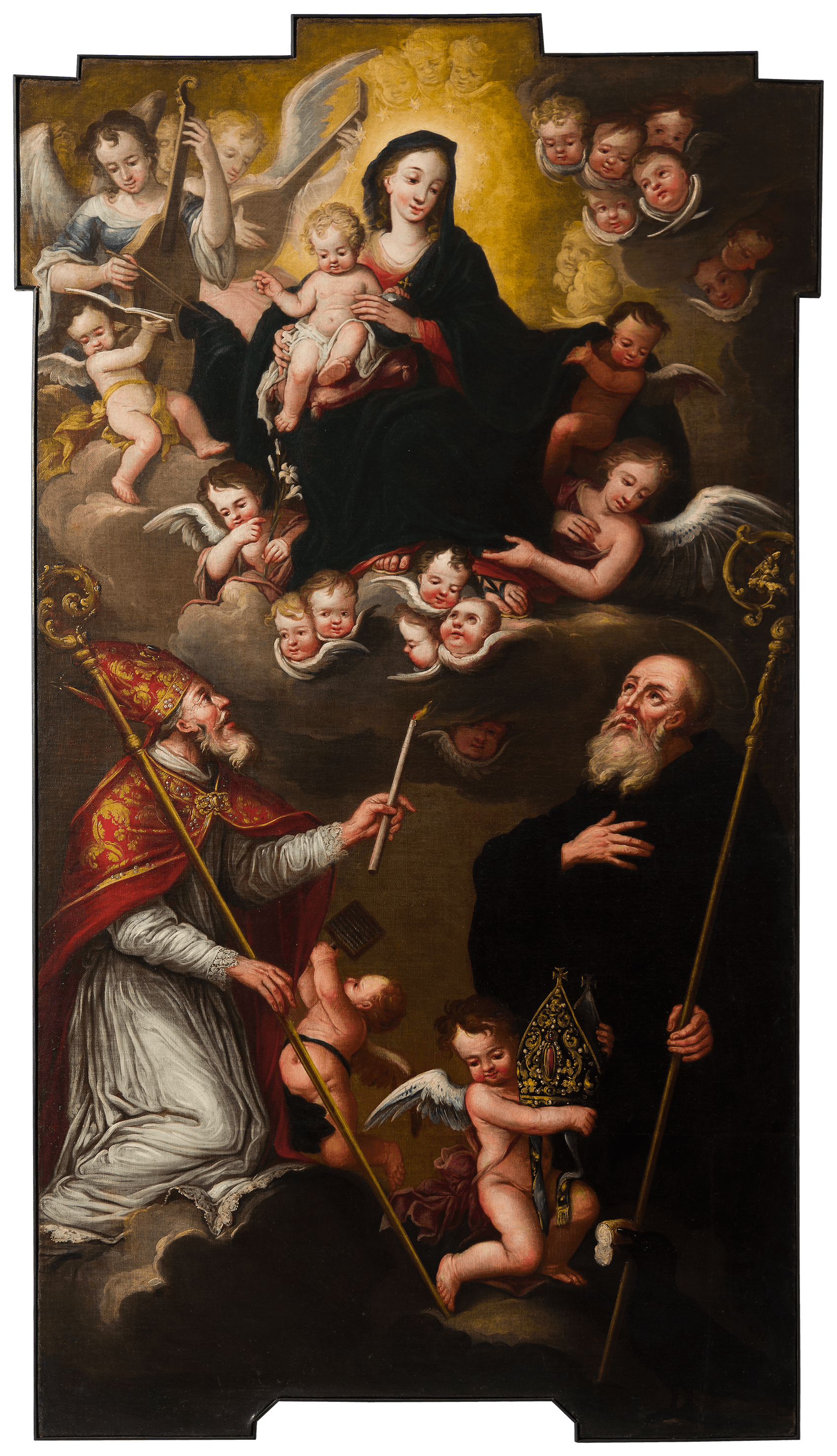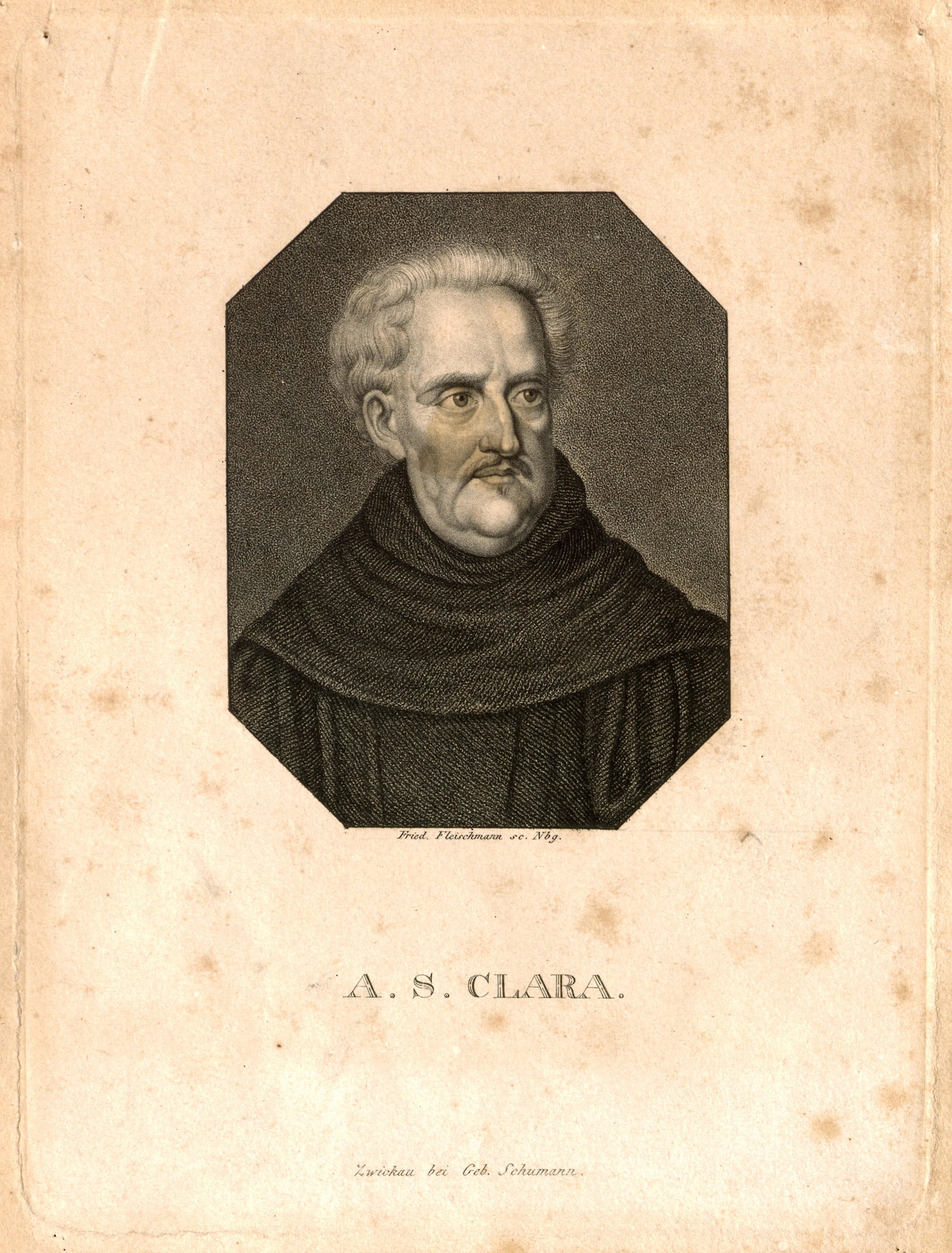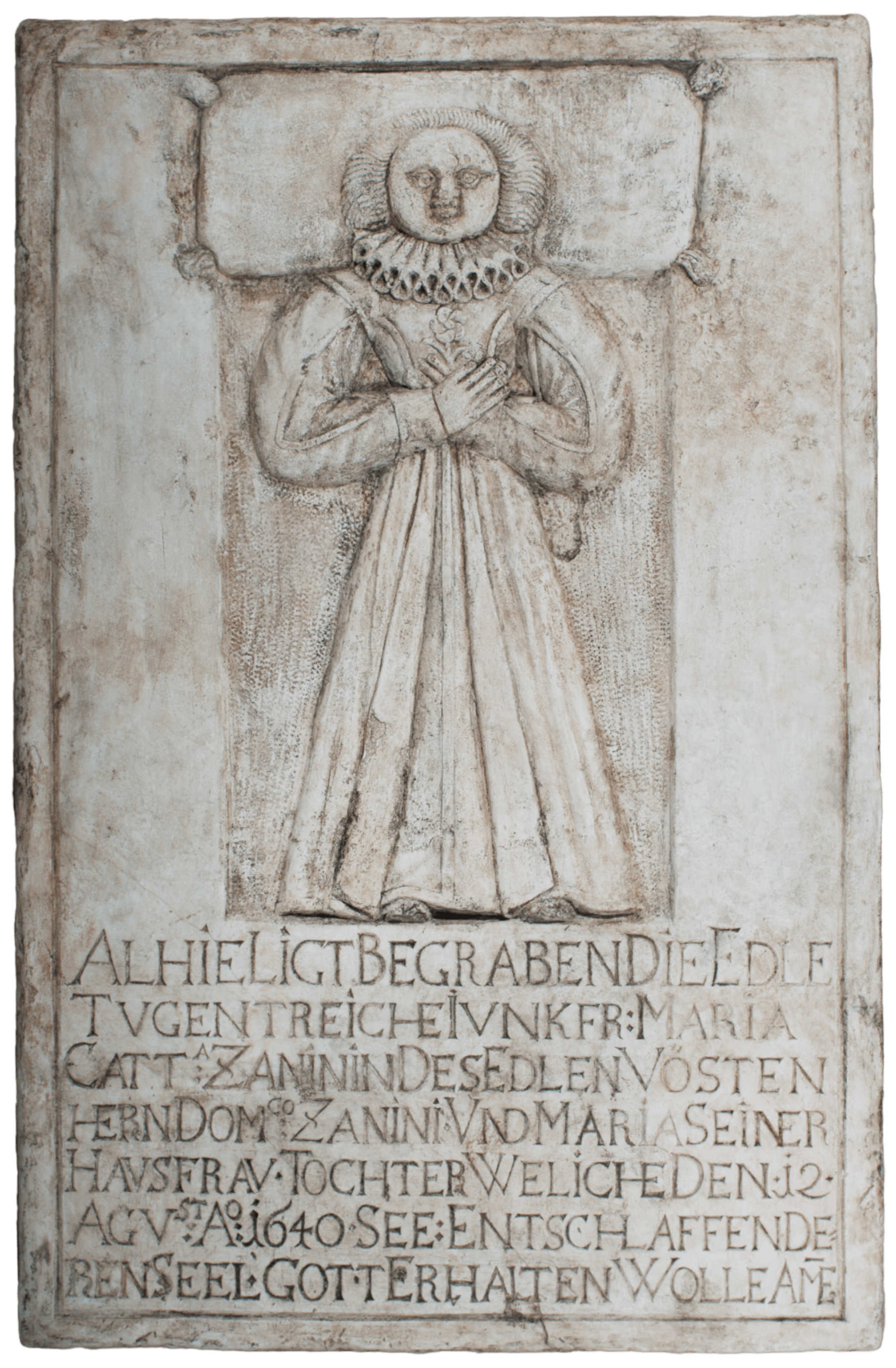

Madonna mit Christuskind “Hl. Blasius und Benedikt“ (Madonna with Infant Jesus “St Blasius and Benedict“), Altar Painting of the Former Chapel in the Admonterhof in Graz Franz Steinpichler, 1695
Popular Devotion Encouraged by the Catholic Church
The altar painting for the St Blaise Chapel of the Admont Abbey Courtyard in Graz is one of Franz Steinpichler’s main works. He also created works for the Jesuits, such as the frescos of the Mausoleum. They were the driving force of Counter-Reformation and promoted Marian devotion. The Mother of God became the epitome of Catholicism, as she hardly plays a role in Protestantism. Here, Mary with child is surrounded by angels; kneeling to her feet is Saint Blaise to the left, and to the right, Saint Benedict.
Oil on canvas
240 × 156 cm
Graz Museum / Photo: Arno Friebes
Catholic Veneration of Images and Saints
The Council of Trent (1545–1563) was fully dedicated to Catholic renewal and the beginning counteroffensive against Protestantism. There, the Catholic Church came to the conclusion that the veneration of relics and saints as well as representations of Christ and Mary the Mother of God were permissible, because as objects of piety they supported the Church’s propagation of faith. With this, the Catholic Church also clearly distinguished itself in the fine arts from Protestantism, which rejected the veneration of images and considered only the written word in the Bible to be permissible. As a result, splendid church furnishings, mass celebrations, pilgrimages, processions and a newly awakened Marian devotion emerged in the Baroque period—all of them expressions of new (Catholic) (popular) devotion.
The Artist Franz Steinpichler
Franz Steinpichler (1630–1714) was one of the leading baroque artists of Graz along with Johann Fischer von Erlach, Matthias Echter and Veit Königer. He was a member of the Graz Painters’ Confraternity (Brotherhood or Association of Painters) and held the honorary title “Court Painter of Inner Austria”. Steinpichler’s main works include the ceiling imagery in the townhouse of the Dietrichstein dynasty, the frescoes in the Chapel of the Cross at Graz Cathedral, parts of the imagery at St Catherine’s Church, Graz, and at the Graz Mausoleum, more than 80 pictures of saints at St. Lambrecht Monastery and numerous altar panels in Styrian parish churches (including Straßgang in Graz).

